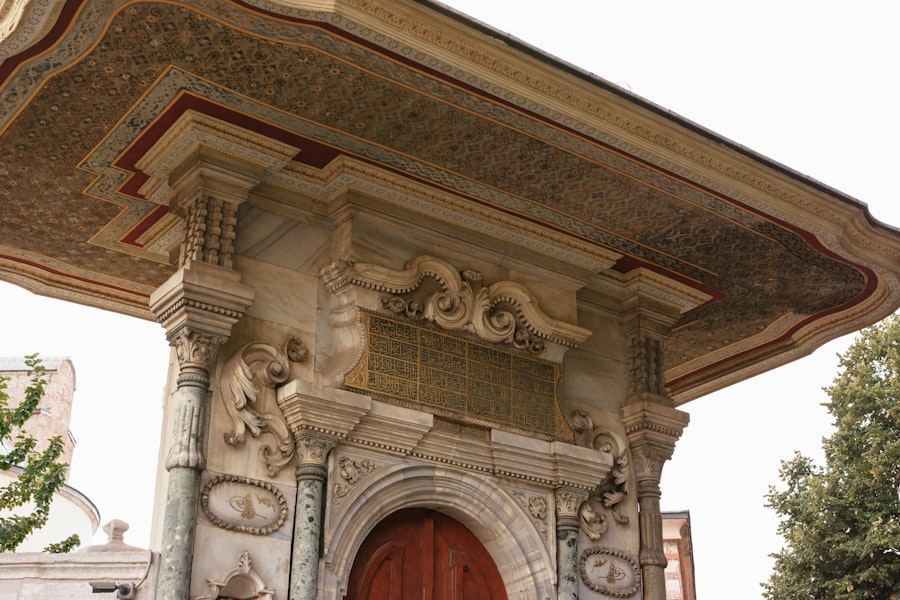Restoration of Manila Cathedral: A Symbol of Resilience
Description
The Manila Cathedral, officially known as the Cathedral-Basilica of the Immaculate Conception, has a rich and storied history that dates back to the Spanish colonial period. The original structure was built in 1581, making it one of the oldest churches in the Philippines. The cathedral was established as the seat of the Archdiocese of Manila, which was created to serve the growing Catholic population in the region.
Over the centuries, the cathedral has undergone numerous transformations, reflecting the changing political and social landscapes of the Philippines. The first structure was made of bamboo and nipa palm, a humble beginning that belied the grandeur that would eventually characterize the cathedral. As the years progressed, the cathedral was rebuilt several times due to various calamities, including fires and earthquakes.
The most significant of these disasters occurred in 1645 when a powerful earthquake destroyed the original structure. Subsequent reconstructions saw the use of more durable materials, such as stone and brick, which were more resilient to natural disasters. The cathedral’s architecture evolved over time, incorporating elements of Baroque and Neo-Gothic styles, which contributed to its majestic appearance.
Each reconstruction not only aimed to restore the physical structure but also sought to embody the spiritual aspirations of the Filipino people, making it a symbol of resilience and faith.
Key Takeaways
- Manila Cathedral has a rich history dating back to the Spanish colonial period, with the first church built in 1571.
- The cathedral has faced destruction multiple times, including during World War II, but has been restored and rebuilt each time.
- The significance of Manila Cathedral lies in its role as the seat of the Archbishop of Manila and its importance in the country’s religious and cultural heritage.
- Over the years, the cathedral has undergone various architectural changes, reflecting different periods of history and styles of architecture.
- The cathedral is adorned with intricate art and decorations, including stained glass windows and religious artwork, adding to its cultural and historical significance.
Destruction and Restoration
Destruction and Devastation
The most devastating event occurred during World War II when the cathedral was heavily bombed in 1945. The destruction was so extensive that only the outer walls remained standing, leaving a shell of what was once a magnificent edifice. This destruction was emblematic of the broader devastation experienced by Manila during the war, as many historical landmarks were lost forever.
Restoration and Rebirth
In the aftermath of World War II, efforts to restore the cathedral began almost immediately. The restoration project was led by renowned architect Fernando Ocampo, who aimed to preserve as much of the original design as possible while incorporating modern techniques and materials. The restoration was completed in 1958, and the cathedral was rededicated to its original purpose.
A Symbol of Hope and Renewal
This process not only involved rebuilding the physical structure but also included restoring its spiritual significance to the community. The resilience demonstrated during this period became a source of inspiration for many Filipinos, symbolizing hope and renewal in a time of great despair.
Significance of Manila Cathedral

The significance of Manila Cathedral extends beyond its architectural beauty; it serves as a vital center for Catholic worship and community life in the Philippines. As the seat of the Archdiocese of Manila, it plays a crucial role in the spiritual guidance of millions of Catholics in the country. The cathedral is not only a place for regular Mass services but also hosts significant religious events, including ordinations, confirmations, and special liturgical celebrations.
These events draw thousands of worshippers, reinforcing its status as a spiritual hub. Moreover, Manila Cathedral is a symbol of national identity and cultural heritage for Filipinos. It stands as a testament to the enduring influence of Catholicism in shaping Filipino values and traditions.
The cathedral has witnessed pivotal moments in Philippine history, including political upheavals and social movements. Its walls have echoed with prayers for peace and justice during times of turmoil, making it a focal point for collective hope and resilience among Filipinos. This deep-rooted connection between the cathedral and the Filipino people underscores its importance as more than just a religious institution; it is an integral part of the nation’s cultural fabric.
Architectural Changes
| Change Type | Number of Changes | Impact |
|---|---|---|
| Structural | 15 | High |
| Functional | 10 | Medium |
| Technical | 20 | Low |
The architectural evolution of Manila Cathedral reflects not only changes in style but also advancements in construction techniques and materials over time. The original structure was simple and functional, designed to accommodate early Spanish settlers and missionaries. However, as Manila grew into a bustling colonial capital, there was a demand for a more grandiose design that could reflect the power and prestige of the Catholic Church.
The most notable architectural changes occurred during the 19th century when significant renovations were undertaken under the direction of architect Juan de la Cruz. These renovations introduced elements of Neo-Gothic architecture, characterized by pointed arches, ribbed vaults, and flying buttresses. This style was particularly popular in Europe at the time and represented a shift towards more elaborate ecclesiastical designs.
The use of local materials such as adobe stone and bricks also became prominent during this period, showcasing a blend of European influence with indigenous craftsmanship. In recent years, further modifications have been made to enhance both functionality and aesthetics. The installation of modern lighting systems and sound equipment has improved the overall experience for worshippers and visitors alike.
Additionally, efforts have been made to ensure that the cathedral is accessible to all, including those with disabilities. These architectural changes reflect a commitment to preserving the historical integrity of Manila Cathedral while adapting it to meet contemporary needs.
Art and Decorations
The interior of Manila Cathedral is adorned with exquisite art and decorations that reflect its rich history and cultural significance. One of the most striking features is its stunning stained glass windows, which depict various biblical scenes and saints. These windows not only serve an aesthetic purpose but also educate worshippers about key aspects of Catholic faith and history.
The vibrant colors and intricate designs create an atmosphere of reverence and beauty within the cathedral. In addition to stained glass, Manila Cathedral is home to numerous religious sculptures and altarpieces that showcase Filipino artistry. The main altar is particularly noteworthy, featuring a magnificent retablo that houses images of saints and religious figures central to Catholic devotion in the Philippines.
These artistic elements are not merely decorative; they play an essential role in enhancing the spiritual experience for visitors and worshippers alike. The art within Manila Cathedral serves as a visual narrative that connects individuals to their faith while celebrating their cultural heritage.
Role in Filipino Culture and Identity

More than a Place of Worship
The role of Manila Cathedral extends into various aspects of Filipino life beyond religious observance. It is often a site for important cultural events such as weddings, baptisms, and funerals, marking significant milestones in individuals’ lives. These ceremonies are steeped in tradition and reflect deep-rooted beliefs about family, community, and spirituality.
A Focal Point for Social Activism
As such, Manila Cathedral serves as a backdrop for personal narratives that intertwine with broader national stories. Moreover, Manila Cathedral has become a focal point for social activism within Filipino society. It has hosted gatherings advocating for human rights, peace initiatives, and environmental awareness campaigns.
A Living Institution in Filipino Culture
This engagement with contemporary issues highlights its relevance in addressing societal challenges while remaining rooted in its spiritual mission. The cathedral’s ability to adapt to changing times while maintaining its core values underscores its significance as a living institution within Filipino culture.
Importance of Resilience
The resilience demonstrated by Manila Cathedral throughout its tumultuous history serves as an inspiring narrative for both Filipinos and visitors alike. Each reconstruction after calamities such as earthquakes or wars reflects not only architectural determination but also an unwavering spirit among those who hold it dear. This resilience is emblematic of the broader Filipino experience—an enduring capacity to rise above adversity while maintaining faith in a brighter future.
It stands as a reminder that even in times of despair, hope can flourish through collective effort and unwavering belief. This message is particularly poignant in contemporary society where issues such as poverty, inequality, and natural disasters continue to affect countless lives.
Furthermore, Manila Cathedral’s resilience is mirrored in its community outreach programs aimed at supporting those in need. Initiatives focused on disaster relief, education, and social services reflect an understanding that true resilience extends beyond physical structures; it encompasses compassion for others and a commitment to uplifting marginalized voices within society.
Future of Manila Cathedral
As Manila Cathedral looks toward the future, it faces both opportunities and challenges that will shape its role within an ever-evolving society. One significant aspect is the ongoing need for preservation efforts to ensure that this historical landmark remains intact for future generations. With advancements in technology and conservation techniques, there is potential for innovative approaches to maintaining its structural integrity while enhancing visitor experiences.
Additionally, engaging younger generations will be crucial in fostering a continued connection between Manila Cathedral and the community it serves. Educational programs aimed at teaching children about their cultural heritage can instill pride in their history while encouraging active participation in church activities. By embracing modern communication methods such as social media platforms or virtual tours, Manila Cathedral can reach wider audiences beyond traditional boundaries.
Moreover, addressing contemporary social issues will remain essential for maintaining relevance within Filipino society. As discussions around social justice gain momentum globally, Manila Cathedral has an opportunity to position itself as a leader in advocating for positive change while remaining rooted in its spiritual mission. By continuing to engage with pressing societal challenges through outreach initiatives or interfaith dialogues, it can reinforce its role as not just a place of worship but also a catalyst for transformation within communities.
In conclusion, Manila Cathedral stands as an enduring symbol of faith, resilience, and cultural identity for Filipinos across generations. Its rich history intertwined with architectural beauty serves as both a reminder of past struggles and an inspiration for future endeavors within society.
If you are interested in exploring more about the beauty of Manila Cathedral, you may also enjoy reading about the “Sweet Selfie Beauty Camera Editor de Fotos” app. This app can help enhance your photos and capture the beauty of the cathedral in a unique way. Check out the article here to learn more about this exciting app and how it can elevate your photography skills.
FAQs
What is the Manila Cathedral?
The Manila Cathedral, also known as the Metropolitan Cathedral of the Immaculate Conception, is a Roman Catholic basilica located in the Intramuros district of Manila, Philippines.
When was the Manila Cathedral built?
The original Manila Cathedral was built in 1581, but it has been destroyed and rebuilt several times due to natural disasters and wars. The current structure was completed in 1958.
What is the architectural style of the Manila Cathedral?
The Manila Cathedral features a combination of architectural styles, including Baroque, Neo-Romanesque, and Neo-Byzantine influences.
What is the significance of the Manila Cathedral?
The Manila Cathedral is a significant religious and cultural landmark in the Philippines. It has been the site of many important events in the country’s history, including the papal visits of Pope Paul VI, Pope John Paul II, and Pope Francis.
Is the Manila Cathedral open to the public?
Yes, the Manila Cathedral is open to the public for worship, prayer, and guided tours. Visitors are welcome to explore the cathedral’s interior and learn about its history and significance.





